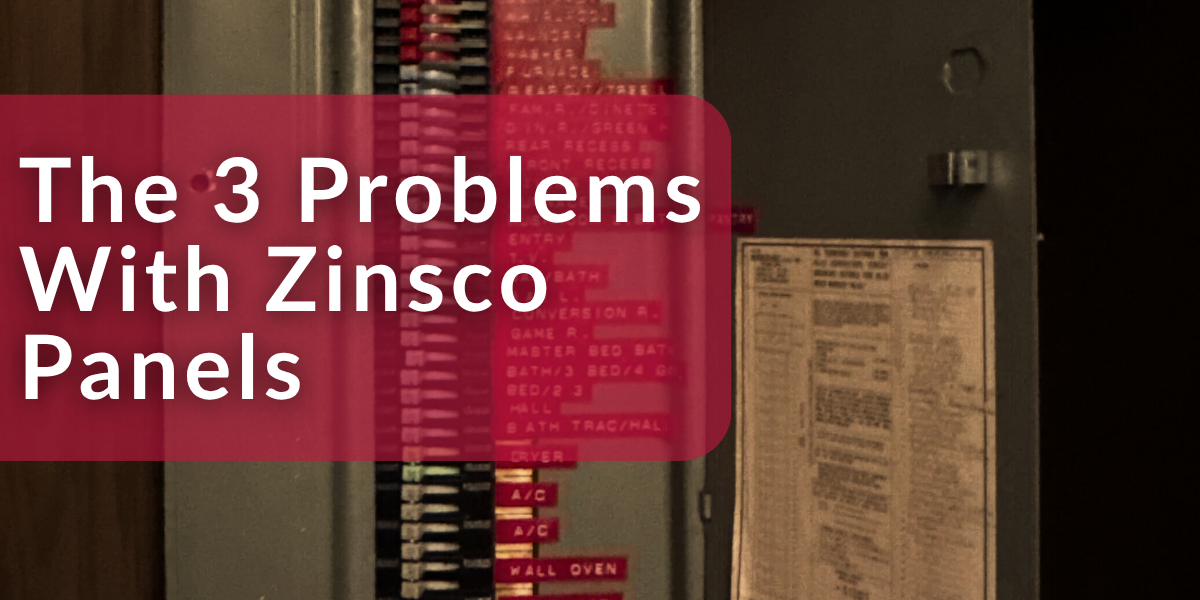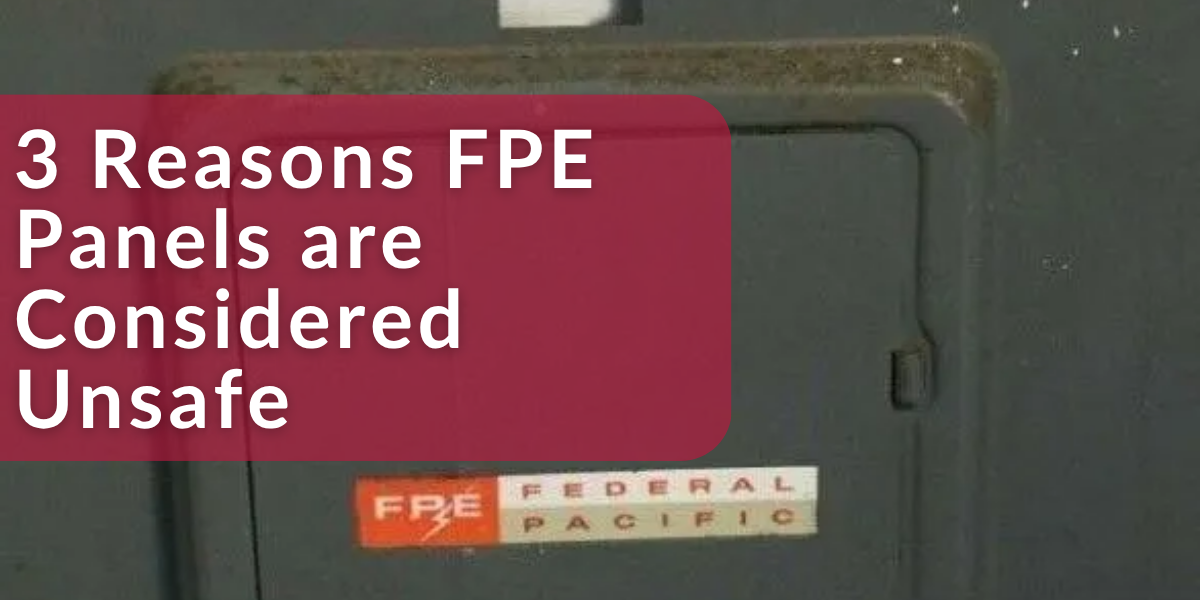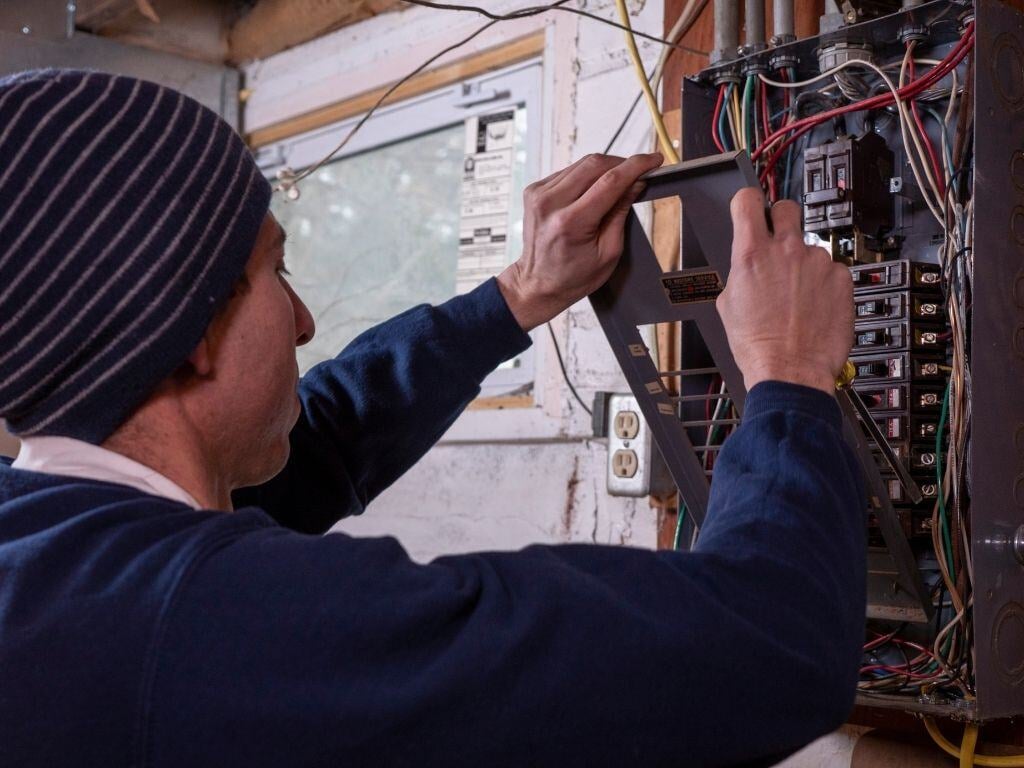The Top 6 Panels That Could Be Putting Your Home at Risk
August 19th, 2025
6 min read

Everything in your home seems to work just fine. The lights turn on. The microwave runs. Nothing trips.
But then an electrician or maybe a home inspector or real estate agent, takes one look at your panel and says, “You should probably replace this.”
Your stomach drops. You nod politely, but inside, you’re thinking: Replace it? Why? It’s been working for years. It’s overwhelming to hear, especially when no one has explained what’s wrong or what it means for your home’s safety.
If your panel is several decades old, it's natural to wonder if it's still safe. Especially when there haven’t been any obvious issues. But the truth is, some electrical panels have known design flaws that make them more likely to overheat, fail, or even cause fires, even if they appear to be working.
At Integra Electrical, we’ve been helping Iowa homeowners evaluate their electrical safety for over 20 years. We specialize in old homes and outdated systems, and we know exactly which panels raise red flags and why.
In this article, we’ll walk you through the top 6 unsafe panels we come across, including:
ITE (Industrial Testing Laboratories)
ITE panels, originally manufactured by Industrial Testing Laboratories, were commonly installed in homes from the 1960s through the 1980s. While the company was eventually acquired by Siemens, many of the original ITE-branded panels remain in use today, quietly aging behind basement doors and garage walls.
What Makes ITE Panels Risky
While not as notorious as some of the other panels on this list, older ITE panels are considered risky because of their age and outdated design. Most are no longer rated for today’s electrical demands, and many homeowners unknowingly overload them with modern appliances and devices. In some cases, breakers fail to trip when they should, especially after decades of wear.

ITE panels may also contain aluminum branch circuit wiring, another outdated practice that can increase the risk of overheating and fire if not properly maintained or upgraded.
How to Spot ITE Panels
- Look for the ITE logo inside the panel door or on the breakers themself
- Older ITE panels often have gray metal covers with minimal labeling
- Breakers may feel loose or difficult to switch
- Panels may be labeled as “ITE Bulldog” or “ITE Siemens” depending on the era
Pushmatic Panels
Pushmatic panels were popular in homes built between the 1950s and 1960s. Instead of using the common toggle-style breakers we see today, these panels featured push-button breakers that had to be physically pressed in to reset. At the time, the design was seen as innovative; decades later, that innovation hasn’t aged well.
What Makes Pushmatic Panels Risky
Pushmatic breakers have a reputation for becoming stiff and unreliable over time. They often fail to reset properly, and in some cases, they stop tripping altogether. Since these panels are no longer manufactured, replacement parts are difficult to find, and using old or refurbished breakers can introduce additional risk.

Many electricians also note that Pushmatic panels lack a main breaker, making it more difficult to safely shut off power to the entire home in an emergency.
How to Spot Pushmatic Panels
- Look for the Push-button breakers instead of toggles
- The Brand "Pushmatic" or "ITE Bulldog" may be visible inside the panel
- Often found in mid-century homes built before 1970
- Panel may feel outdated, with tight or stuck breakers
Zinsco Panels (also labeled Sylvania)
Zinsco panels were widely installed in homes throughout the 1960s and 1970s. For a time, they were seen as a standard option in residential construction. Eventually, the Zinsco brand was bought out by Sylvania but many of the original designs, and their flaws, remained in circulation under the new name.
What Makes Zinsco Panels Risky?
Zinsco panels are known for a critical failure: the breakers can appear to be off but still conduct electricity. This means circuits may remain energized even when a homeowner or electrician thinks they’ve been safely shut off.
 Over time, the breakers in Zinsco panels often melt to the bus bar, creating loose connections that increase the risk of overheating, arcing, and electrical fire. These panels also don’t comply with modern safety standards, and like Pushmatic, compatible replacement parts are no longer made.
Over time, the breakers in Zinsco panels often melt to the bus bar, creating loose connections that increase the risk of overheating, arcing, and electrical fire. These panels also don’t comply with modern safety standards, and like Pushmatic, compatible replacement parts are no longer made.
How to Spot Zinsco Panels
- Look for the brand name Zinsco or Sylvania inside the panel
- Breakers often have bright colors (blue, green, red) and a slim, vertical profile
- Bus bar may appear corroded or discolored
- Common in homes built between 1960 and 1980
- Breakers may wiggle loosely or feel improperly seated
Federal Pacific Electric (FPE) Panels
Federal Pacific Electric panels, especially the ones labeled Stab-Lok, were installed in millions of homes across the U.S. from the 1950s through the 1980s. For years, they were one of the most common residential panels in the country. But today, they’re one of the most infamous.
What Makes FPE Panels Risky?
FPE panels are known for a shocking failure: their breakers frequently fail to trip when they should. This means if there’s an overload or short circuit, the breaker might stay on, allowing wires to overheat and significantly increasing the risk of electrical fires.
 In fact, multiple independent studies and expert testimony have shown that up to 1 in 3 FPE breakers don’t trip under dangerous conditions. Despite this, many of these panels are still in use today.
In fact, multiple independent studies and expert testimony have shown that up to 1 in 3 FPE breakers don’t trip under dangerous conditions. Despite this, many of these panels are still in use today.
How to Spot FPE Panels
- Look for the brand Federal Pacific Electric or FPE inside the panel
- Breakers are usually labeled Stab-Loc
- Toggle switches may be orange or red, sometimes black
- Panel often has a thin red label across the inside of the door
- Common in homes built between the 1950s and early 1980s
Wadsworth Panels
Wadsworth panels were commonly installed in homes built between the 1940s and 1960s. At the time, they were considered a reliable option but the company went out of business decades ago, and their panels haven’t been manufactured or supported since.
What Makes Wadsworth Risky?
The main concern with Wadsworth panels is their age and lack of available replacement parts. Because the breakers are proprietary and no longer made, homeowners often can’t find a safe, compatible way to repair or upgrade the system. This leads to cobbled-together solutions or breaker replacements that don’t fit properly both of which increase the risk of overheating and failure.
 While Wadsworth panels don’t have the same widespread safety failures as FPE or Zinsco, they’re considered obsolete and are unlikely to meet the demands or code requirements of a modern home.
While Wadsworth panels don’t have the same widespread safety failures as FPE or Zinsco, they’re considered obsolete and are unlikely to meet the demands or code requirements of a modern home.
How to Spot Wadsworth Panels
- Look for the Wadsworth name stamped inside the panel door or on the breakers
- Often found in older homes built before 1970
- Breakers may be wider than modern styles and hard to move
- The panel itself may appear aged, corroded, or patched together
Fuse Panels
Before circuit breakers became the standard, fuse panels were the go-to method for protecting home electrical systems. Most were installed in homes built before 1960, and while some still function today, they fall short of modern safety standards in several key ways.
What Makes Fuse Panels Risky
Fuse panels aren’t inherently dangerous, but they’re easily misused. Many homeowners, frustrated with blown fuses, replace them with oversized fuses to “fix the problem,” which allows too much current to flow through the wiring. This creates a serious fire risk.
 Fuse panels also lack the capacity and flexibility needed for modern appliances, smart home systems, and electrical loads. Even when functioning properly, they make upgrading or adding circuits difficult and costly.
Fuse panels also lack the capacity and flexibility needed for modern appliances, smart home systems, and electrical loads. Even when functioning properly, they make upgrading or adding circuits difficult and costly.
How to Spot Fuse Panels
- Instead of breakers, you’ll see screw-in fuses
- Often found in homes built before 1960
- The panel may be small, metal, and mounted on a wood backboard
- No toggle switches, just circular glass or ceramic fuse caps
What to Do If You Have One of These Panels
If you recognized your panel on this list, don’t panic, but don’t ignore it either. Even if everything seems to be working fine, these outdated panels are known for hidden failures that often show up after damage has already been done.
The safest move? Have a licensed electrician inspect your panel and evaluate whether it’s time for an upgrade. In many cases, we find early signs of wear, corrosion, or tripping issues that homeowners hadn’t noticed yet. Getting ahead of it now can prevent bigger and more expensive problems later like insurance headaches, inspection delays, or even electrical fires.
At Integra Electrical, we offer complimentary breaker panel evaluations and cleanings for homeowners in and around the Des Moines area. We’ll take a look, answer your questions, and give you honest advice based on the age and condition of your system.
Not sure what kind of panel you have or what it might cost to replace it? Try our free Panel Upgrade Calculator to get a quick, personalized estimate.
Frequently Asked Questions
If my panel is one of the unsafe panels, but everything seems fine, do I still need to replace it?
Even if your lights and appliances are working, panels like FPE, Zinsco, or Pushmatic are known to fail silently. The danger isn’t what you see today, but what could happen during an overload or short circuit. We recommend you replace it as soon as you can, or it can be costly and dangerous later.
Are these panels illegal?
Most aren’t technically “illegal,” but many are considered obsolete and no longer meet modern safety standards. Most insurance companies may even deny coverage or raise premiums if they find one of these panels in your home.
Can I just replace the breakers instead of the whole panel?
In many cases, no. Replacement breakers for brands like FPE, Zinsco, and Wadsworth are either unavailable or unreliable. Even when you can find them, they often don’t solve the underlying design flaws.
How do I know what kind of panel I have?
Look for brand names or labels inside the panel door. Features like push buttons (Pushmatic), colored slim breakers (Zinsco), or screw-in fuses (fuse panels) can also give it away. If you’re unsure, a licensed electrician can confirm it for you safely.
How much does it cost to replace an outdated panel?
Panel replacements can range widely depending on the size of your home and the condition of your wiring. A ballpark range is $3,000–$15,000, but the best way to know is to use our
for a personalized estimate.Daniel Carpenter is a licensed electrician on Integra’s installation team. He got his license at just 19, but he's been around the trade his whole life. With five years on the job and a heart for helping homeowners, Daniel takes pride in doing quality work that serves the local community.
Topics:



.png?width=1200&height=600&name=ITEpanel%20(2).png)







